News
Politics News
Politics News
Browse all Politics related articles and news. The latest news, analysis, and insights on Politics.
Daily Market Summary with JrKripto 29 April 2025
You can find today’s “Daily Market with JrKripto” article below, where we compiled the most important developments in global and local markets. Let’s analyze the general market conditions together and take a look at the latest evaluations.Bitcoin (BTC) is currently trading at $94,700. The price has strongly continued the upward trend that started from the $75,930 support level and has now surpassed the $94,000 levels. Currently hovering near the $95,000 – $96,000resistance zone, a breakout from this region could bring $101,000 into focus. However, if profit-taking occurs around $95,000, the first support lies at $90,500. If this level is broken downward, $86,500 will be the next support level to watch.Ethereum (ETH) is trading at $1,824. The price continues its recovery that began from the $1,486 support. If the upward movement continues from the current level, the resistance levels to watch will be $1,888, followed by $1,950. On possible pullbacks, $1,790 will act as the first defense level. If that level fails, $1,700 will be the stronger support. To maintain the uptrend in ETH, staying above $1,790 is important.Crypto NewsCircle ($USDC) received approval to operate as a money services provider in Abu Dhabi, UAE.South Korea plans to approve spot crypto ETF trading later this year.Arizona became the first U.S. state to pass a $BTC reserve bill allowing 10% of public funds to be invested in virtual assets like Bitcoin. The bill now awaits Democratic Governor Katie Hobbs’ signature to become law.Standard Chartered predicts a new all-time high (ATH) for Bitcoin in Q2.U.S. Treasury Secretary Bessent says the first trade deal may be finalized this week or next.MicroStrategy purchased 15,355 BTC.Tether minted $1 billion in USDT.Top Gainers in Cryptocurrencies:SAFE → up 27.9%, now at $0.5898LAYER → up 15.0%, now at $3.12BABY → up 10.8%, now at $0.0926VIRTUAL → up 10.3%, now at $1.44MOCA → up 8.3%, now at $0.0968Top Losers:POPCAT → down 14.6%, now at $0.3684DEEP → down 11.1%, now at $0.2071WIF → down 10.3%, now at $0.5922TRUMP → down 9.7%, now at $13.75KAITO → down 9.6%, now at $0.9009Other Metrics:Fear Index:Bitcoin: 58Ethereum: 49Dominance:Bitcoin: 64.23% ▼ -0.25%Ethereum: 7.51% ▲ +1.25%Daily Total Net ETF Inflows:BTC ETFs: $591.20 millionETH ETFs: $64.10 millionData to Watch Today:Conference Board (CB) Consumer Confidence (April): Forecast: 87.7 | Previous: 92.9Job Openings and Labor Turnover Survey (JOLTS) (March): Forecast: 7.490M | Previous: 7.568MGlobal MarketsU.S. stock markets started the week positively with a heavy flow of economic data and earnings reports but couldn’t maintain gains and ended the day flat.S&P 500: +0.06%Dow Jones: +0.28%Nasdaq: -0.10%8 out of 11 major sectors closed in the green. The top performers were:Infrastructure: +0.70%Real Estate: +0.68%Energy: +0.63%Sectors underperforming included:Technology: -0.30%Consumer Staples & Discretionary: -0.15% eachEuropean markets also ended the day mostly flat to slightly positive.Today, company earnings will be the focus, especially from Visa, Coca-Cola, Spotify, and Mondelez, which will be key in assessing consumer trends and corporate outlooks.On the data side, the U.S. will release:Consumer confidenceJOLTS (Job openings)Trade balanceHousing pricesIn March, the trade deficit fell by $7.7B to $147.9B. JOLTS showed open jobs declined by 194K to 7.57M, with a hiring rate of 3.4%. Layoff and quit rates were stable at 1.1% and 2.0%, respectively.ECB will release March inflation expectations today. Asian markets showed mixed performance, while European indexes are expected to open higher.Most Valuable Companies & Stock PricesApple (AAPL) → $3.16T market cap, $210.14/share, ▲ 0.41%Microsoft (MSFT) → $2.91T, $391.16/share, ▼ 0.18%NVIDIA (NVDA) → $2.65T, $108.73/share, ▼ 2.05%Amazon (AMZN) → $1.99T, $187.70/share, ▼ 0.68%Alphabet (GOOG) → $1.97T, $162.42/share, ▼ 0.87%Borsa Istanbul (BIST)Rising interest rates, weak earnings, and ongoing risks have kept the BIST 100 index tightly ranged between 9250–9500for nearly a month.Yesterday, the index dropped 1.3%, closing at 9307, with banking stocks falling 3.2%, diverging negatively.Technical levels to watch:Support: 9250 → 9100/9000 → 8870/8618Resistance: 9390 → 9500 → 9580 → if broken, a move to 9740–9895 is possibleUpcoming Turkish data:March unemployment rateApril economic confidence index (previous: 100.8, decline expected)CDS risk premium started the day at 357 bps.Both technical and fundamental indicators suggest staying cautious on BIST.Top Companies by Market Cap in BISTQNB Finansbank (QNBTR) → ₺927.95B, ₺281.00/share, ▲ 1.44%Aselsan (ASELS) → ₺632.02B, ₺138.20/share, ▼ 0.29%Turkish Airlines (THYAO) → ₺431.60B, ₺301.75/share, ▼ 3.52%Garanti Bank (GARAN) → ₺425.46B, ₺101.90/share, ▲ 0.59%ENKA (ENKAI) → ₺376.33B, ₺63.55/share, ▼ 1.01%Precious Metals & FXGold: ₺4,086Silver: ₺41.18Platinum: ₺1,227USD/TRY: ₺38.43EUR/TRY: ₺43.82Looking forward to seeing you again tomorrow with the latest updates!

US Treasury Secretary Scott Bessent: "The Difficult Process with China Continues"
A New Era in U.S. Trade Policy: Deal with India Expected SoonA new chapter in U.S. trade policy is unfolding. Treasury Secretary Scott Bessent announced that a trade agreement with India could be finalized as early as next week.Bessent’s remarks signal that Washington is now pursuing a more aggressive trade strategy in the Asian market.Rapid Progress with India, Japan, and South KoreaBessent noted that significant progress is being made not only with India but also in ongoing trade talks with Japan and South Korea.These developments highlight the swift implementation of the U.S. strategy to expand its trade network across Asia and reduce economic dependence on China.A potential deal with India, in particular, could elevate economic cooperation between the world's two largest democracies to an unprecedented level.Negotiations with China: A Tough Road AheadHowever, the same level of success has yet to be achieved in negotiations with China.Bessent emphasized that China must take more concrete steps, warning that the current state of trade tensions is unsustainable.He stressed that efforts to ease tensions would require China to adopt a more constructive attitude.The slow pace of talks with China has led the U.S. to place greater emphasis on strengthening economic partnerships elsewhere in the Indo-Pacific region.Critical White House Press Conference ScheduledThe White House has announced that Scott Bessent will hold a press conference on April 29, 2025.During the event, Bessent is expected to share key details about the potential trade agreement with India, steps regarding tariff adjustments, and the broader outline of America’s new trade strategies.Although the official agenda has not yet been released, the press conference is anticipated to deliver crucial messages concerning U.S. policies in Asia and global trade dynamics.The U.S. Pursues a New Balance in Trade StrategyBessent’s statements suggest a shift toward a more pragmatic and results-oriented U.S. trade policy.While aiming for quick, tangible gains with partners like India, Japan, and South Korea, Washington appears to be adopting a more patient and strategic approach toward China.This strategy is likely to have not only economic but also geopolitical consequences.The future of U.S.-China tensions will impact not just bilateral relations but also the stability of global financial markets.A New Trade Push in Asia BeginsAs the U.S. accelerates its trade initiatives in the Indo-Pacific region, it is preparing to take a more cautious stance with China.Scott Bessent’s comments are a strong indication that major developments in international trade may unfold in the coming weeks.The details of the potential agreement with India — and how negotiations with China evolve — will be among the key forces shaping the future of the global economy.
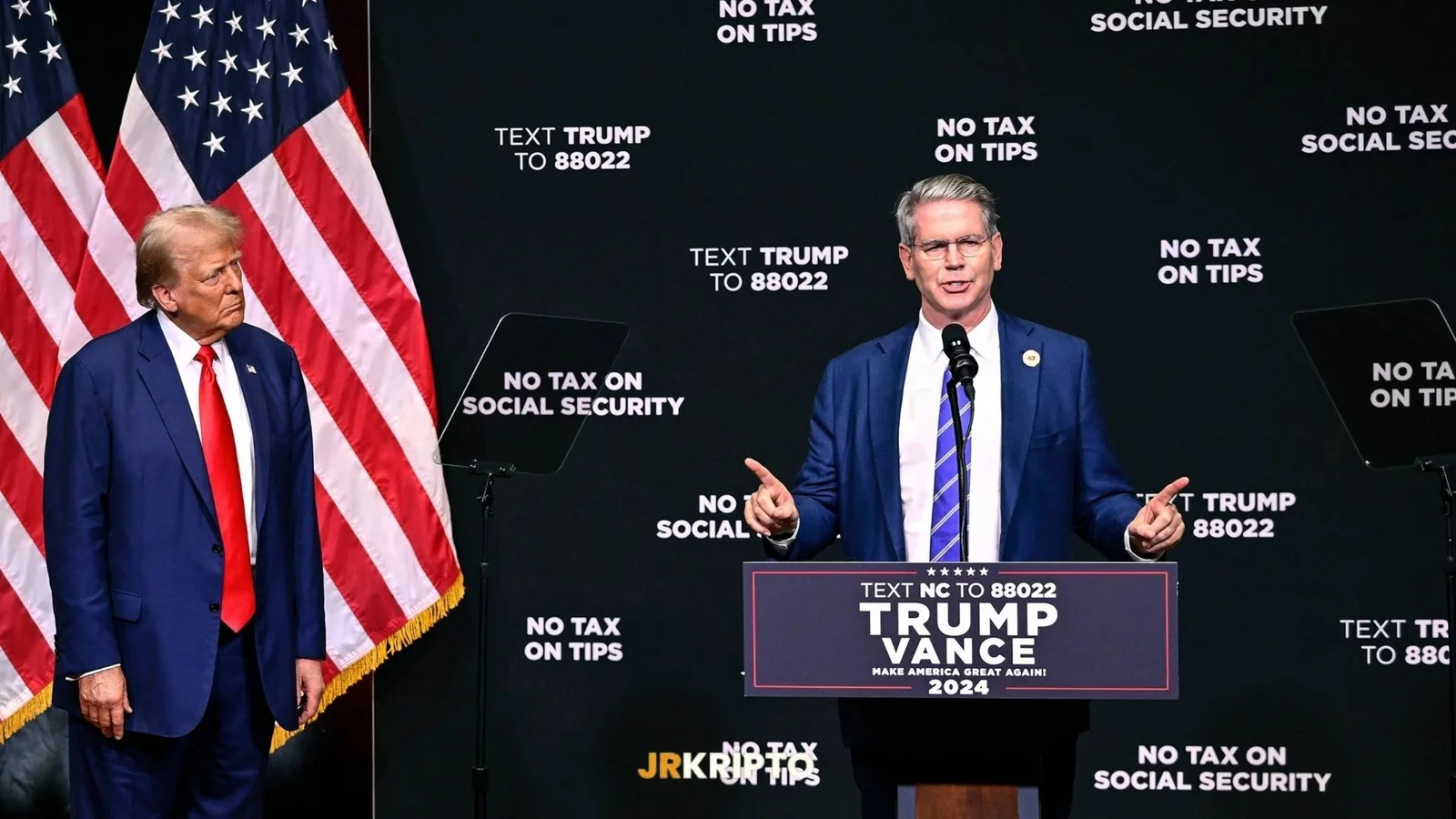
China's Clear Response to US Tariff Deal Claims: “There are No Talks”
China Denies Trump’s Claims of Progress on Trade TalksRecent statements from U.S. President Donald Trump regarding progress in trade negotiations with China have been swiftly and firmly denied by Beijing.At a press conference on April 28, 2025, Chinese Foreign Ministry Spokesperson Guo Jiakun announced that there had been no recent phone calls or tariff negotiations between the two countries.China’s Firm Response: “Threats Will Not Solve Anything”Guo Jiakun accused the Trump administration of trying to exert pressure through threats and misinformation.“If the U.S. truly seeks a resolution, it must abandon the language of threats and demonstrate a willingness to negotiate,” Guo said.China’s comments came in response to Trump’s recent interview with Time magazine, where he claimed to have spoken directly with Chinese President Xi Jinping and suggested that the two sides were close to a tariff agreement.Beijing, however, categorically rejected these claims, labeling them as attempts to mislead the public and clarified that no new negotiation process has been initiated.Trump’s Claims vs. RealityPresident Trump recently announced that the U.S. had raised tariffs on Chinese imports to 145%, claiming it was benefiting the American economy.However, China strongly refuted Trump’s assertions, emphasizing that no new negotiations concerning tariffs are currently underway.The conflicting narratives underscore that a resolution to the long-running U.S.-China trade war remains a distant prospect.Mounting Pressures on the Global EconomyThe ongoing trade tensions between the U.S. and China continue to disrupt global economic stability.Tariffs exceeding 100% on both sides have led to increased costs across numerous industries and caused significant supply chain disruptions.According to a recent Reuters report, China has temporarily exempted certain critical U.S. imports from the steep 125% tariffs.Nevertheless, broader economic relations remain strained, with Chinese officials warning that U.S.-imposed tariffs are jeopardizing the fragile global economic recovery.Trust Is Low, But Hope Remains in Trade TalksChina’s firm stance highlights the fragile state of trust between the two nations.The deep divide between Trump’s aggressive tariff policies and China’s rebuttals suggests that tensions could escalate further in the near future.However, the fact that both sides are publicly acknowledging the seriousness of the situation may eventually lay the groundwork for more stable and reliable negotiations.The coming weeks will be critical — positive steps from both parties could gradually reduce uncertainty and bring much-needed stability to global markets.
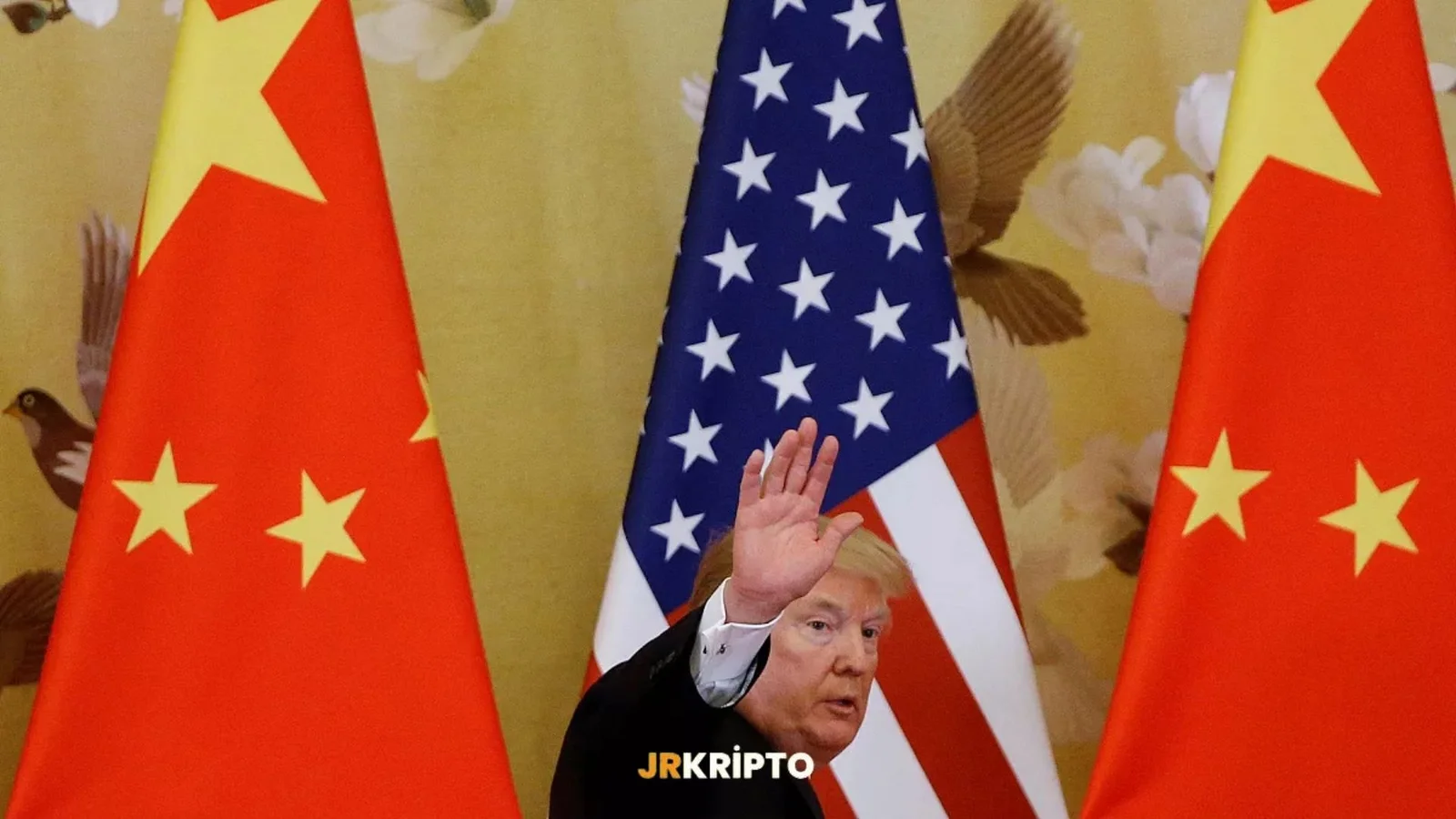
Trade Tensions Between the Trump and Chinese Decrees
US President Donald Trump expects a trade deal with China in the next three to four weekshe explained that he was waiting for the result. However, the Chinese government quickly denied these statements, denying,he announced that no negotiations were held with the United States on customs duties. Thus twothe ongoing trade tension between the countries has gained a new dimension.Dec.US Claims and China's ReactionPresident Trump said in an interview with Time magazine that he had met with Chinese President Xi Jinping andhe said that trade negotiations will be concluded soon. Also imported from Chinastating that they have increased the customs duties they apply to products to 145%, Trump said that this policyHe argued that it reflected positively on the US economy.The Chinese Foreign Ministry, on the other hand, rejected Trump's claims. In the official statement made, with the USAit was stated that no negotiations were conducted on customs duties. China also includes the United Stateswhile inviting the public to refrain from misinformation, we believe that unilateral tariff increaseshe stressed that it had a negative impact on the negotiations.Both Countries Have Turned to Partial ExemptionsThe US has recently temporarily imposed duties on some technology products imported from Chinahe suspended it. Smartphones and computers stand out Decently among these products. But in the general frameworkthe application of high customs duties continues.In October, China imposed additional duties of 125% on some products imported from the United States in responsehe is considering temporarily removing it. This move is an attempt to relieve economic pressureit is being interpreted. USA and China The Global Economy Is Under PressureThe uncertainty created by the trade war between the United States and China continues to affect global markets Decis doing. While investors are being more cautious in this uncertain environment, cost increases in many sectorsand supply chain disruptions are happening. The International Monetary Fund (IMF), on the other hand, by making a call to the leaders,he noted that trade tensions should be resolved quickly, and if the process is prolonged, the globalhe warned that economic growth would suffer.The Uncertainty ContinuesThe future of trade negotiations between the US and China remains uncertain. Dec. Trump's dealdespite the recent statements, the harsh Decrees from China indicate that the tension between the two countries is shortit may be a sign that the term will not end. Investors and the business world are taking these critical developmentswatching closely, he is waiting for when and how the tension will be resolved.
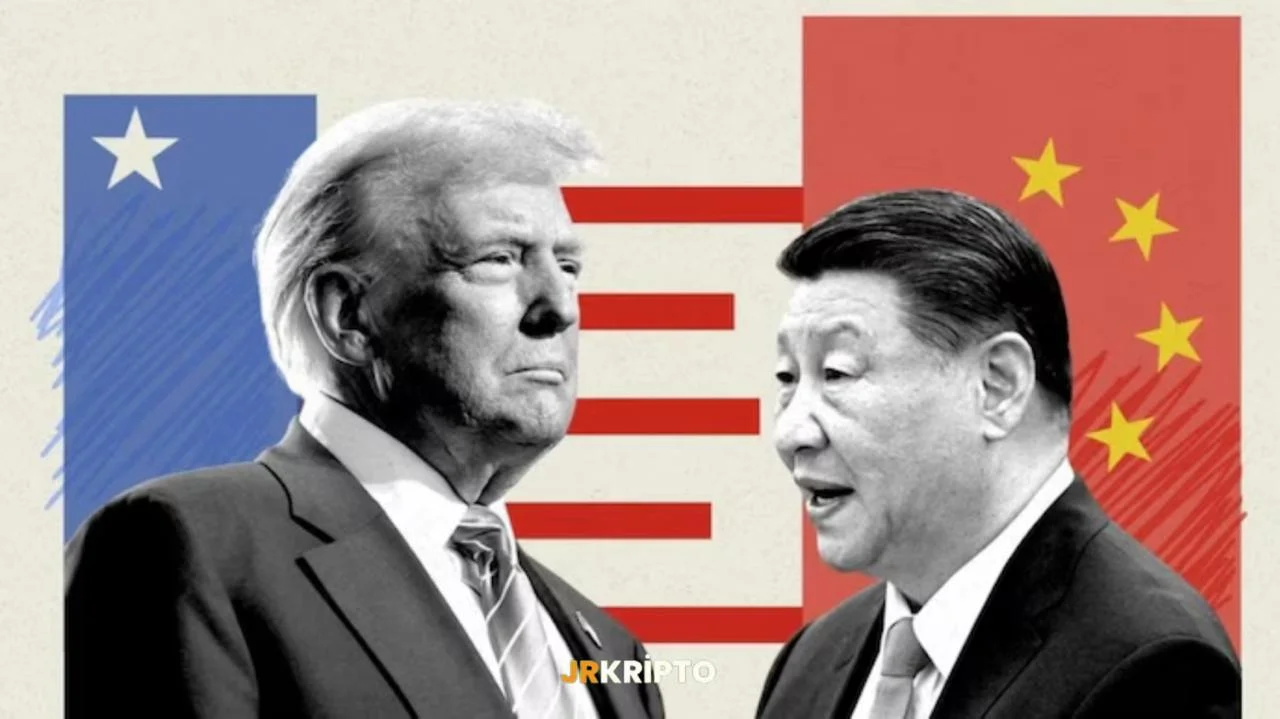
Trump's Clear Message to the Fed: "Lower Interest Rates, Ease the Economy"
US President Donald Trump has called for interest rate cuts again to accelerate economic growth. Describing Fed Chairman Jerome Powell as a "big loser," Trump argued that if interest rates are not cut immediately, the economy could slow down. According to Trump, now is the time for quantitative easing.What is Trump Saying?Trump lashed out at Fed Chairman Powell in his latest statement with very harsh terms. Reminding us that the European Central Bank has cut interest rates seven times this year, he claimed that the US is lagging behind. Trump, who particularly implies that interest rate moves made during election periods have political purposes, has the following prominent messages:Things are going well in customs negotiations.The US will make a lot of money from this process.Inflation is under control and is almost at zero.Interest rate cuts have now become inevitable.How Will Quantitative Easing Affect the Market?Trump's call for a rate cut actually sends a clear signal to the markets: Quantitative easing. Such policies usually mean more liquidity in the markets. As a result:It may create effects such asUpward movements in stock markets,Increase in demand for risky assets,A new wave of rise in cryptocurrencies. This call, especially made at a time when the US is entering an election atmosphere, may signal an early bull period to the markets.Will the Fed Respond to Trump's Call?The Fed, chaired by Jerome Powell, has been taking cautious and careful steps recently. However, with the permanent decline in inflation and signals of a possible slowdown in economic growth, it may open the door to interest rate cuts. These statements by Trump will increase public pressure on the Fed.Is It the Beginning of a New Era for the Markets?Trump's interest rate cut request means much more than a political statement. The desire for monetary expansion behind this call may bring a positive atmosphere to the markets. However, the response the Fed will give will be the most critical factor in determining how financial markets will shape in the coming period.
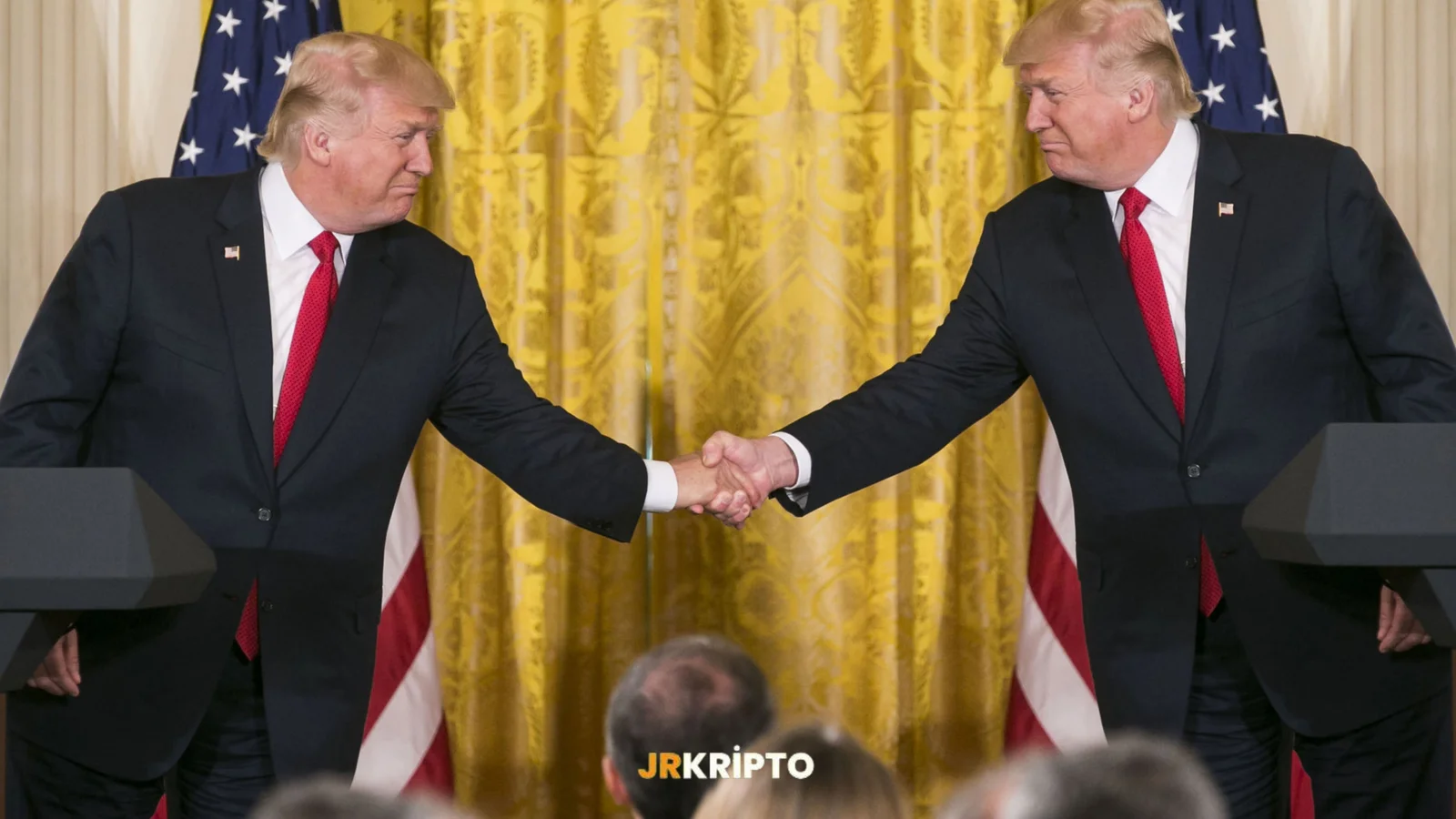
China's Harsh Response to the US: Customs Duty Has Increased to 125%
The long-running trade war between the United States and China has reached a new flashpoint in the spring of 2025. Following U.S. President Donald Trump’s decision to raise tariffs on Chinese goods to a staggering 145%, Beijing has responded with retaliatory measures. As of April 12, 2025, China announced it will increase tariffs on U.S. imports to 125%.A New Wave of Tension Between Two Global PowersLast week, President Trump accused China of continuing to "exploit" the U.S. economy and announced sweeping tariff hikes. The newly announced 125% tariff, when combined with an earlier 20% penalty tied to fentanyl-related imports, brings the total tariff burden to 145%.In a statement on social media, Trump said, “Hopefully China will now realize that exploiting the United States and other nations is unsustainable.” He also noted that additional tariffs on other countries have been temporarily suspended for 90 days, during which over 75 countries have reportedly entered talks for new trade deals with the U.S.China Hits Back: “These Policies Lack Economic Credibility”China wasted no time in issuing a forceful response. The Ministry of Finance criticized Washington’s actions, stating that such trade moves are “economically irrational” and “will be remembered as a joke in the history books.”The Chinese Ministry of Commerce confirmed the tariff increase on U.S. goods from 84% to 125%, effective April 12. The official statement warned, “If the U.S. continues to blatantly violate China’s interests, we will not hesitate to take stronger measures.”President Xi Jinping: “China Will Not Bow—Our Strength Comes from Within”Speaking publicly for the first time on the issue, Chinese President Xi Jinping addressed the trade dispute during a meeting with Spanish Prime Minister Pedro Sánchez. “China has never relied on the mercy of other nations. The more pressure we face, the stronger we become,” Xi said. He also called on the European Union to unite in defending global economic stability and resisting unilateral coercion.How Are Global Markets Reacting?Although Asian markets initially responded with optimism, financial experts warn that prolonged trade tensions could significantly increase the risk of a global recession.Turkish President Recep Tayyip Erdoğan also weighed in with a striking statement: “A storm is coming that will affect everyone, large or small. The deeply rooted global system is cracking at its core,” he said, highlighting the potential for widespread economic disruption.Are We Entering a New Era of Global Trade?The U.S.-China trade conflict has clearly entered a new phase. These escalating measures are not just about economics—they’re reshaping international alliances, diplomatic relations, and global market dynamics.While the future of this economic showdown remains uncertain, one thing is clear: this trade war may play a defining role in the future of the global economy.
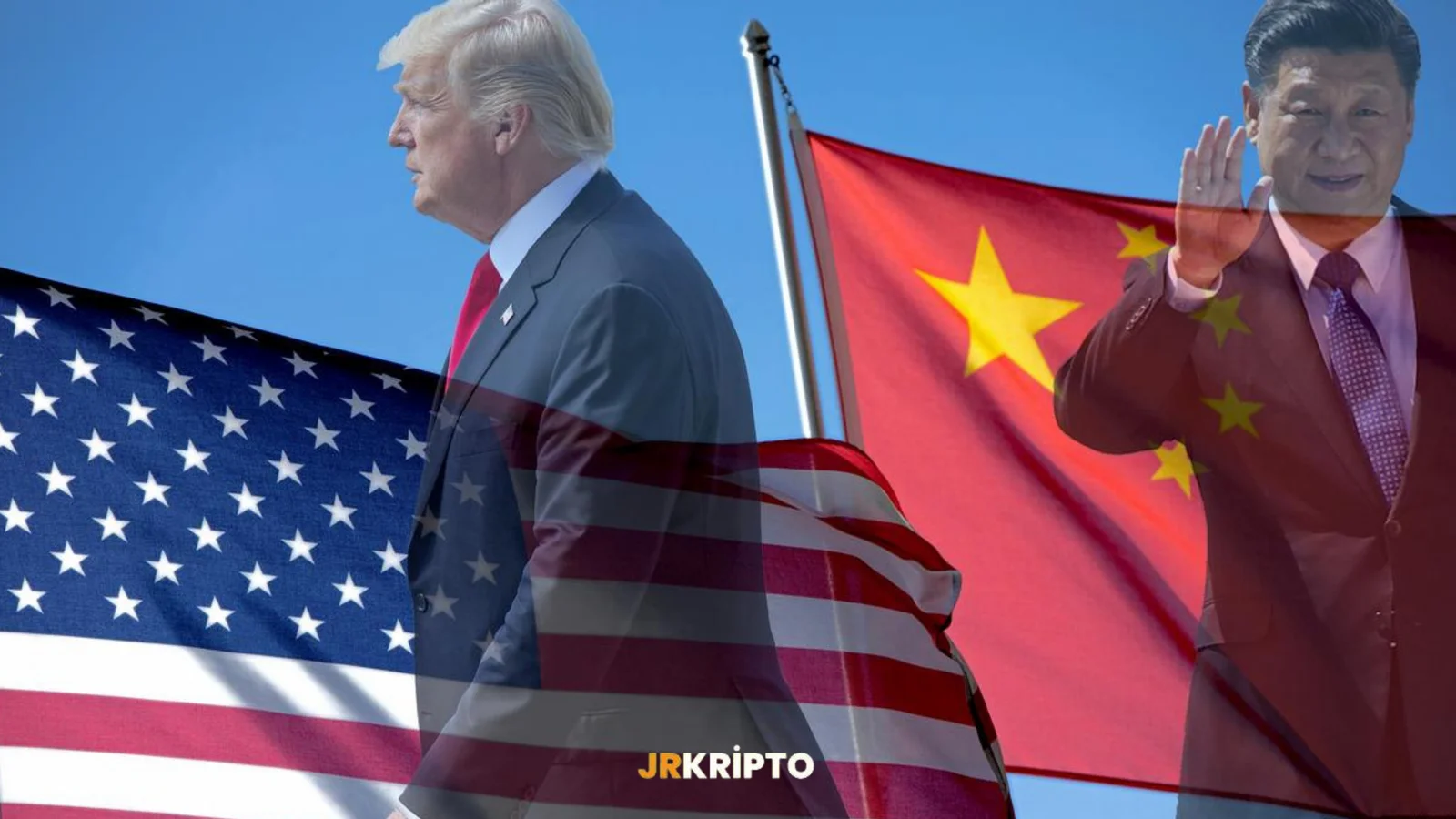
The New Hampshire State Assembly has passed the Bitcoin Reserve Act.
Digital assets are steadily carving out a more prominent place within the global financial system—and the latest spotlight is on the northeastern U.S. state of New Hampshire. In a historic move, the state’s House of Representatives has approved a groundbreaking bill that would allow public funds to be invested in Bitcoin and precious metals. Known as HB302, the bill passed on April 10, 2025, with 192 votes in favor. All eyes are now on its fate in the state Senate.Bitcoin in Public Funds: A First in the MakingIf HB302 passes the Senate and receives the governor’s signature, New Hampshire could become one of the first U.S. states to officially recognize Bitcoin as a strategic reserve asset. This isn’t just a symbolic gesture—it’s a powerful indication that digital assets are gaining legitimacy in the realm of public finance.The bill allows up to 5% of the state’s general fund to be allocated toward “qualified assets,” a category that includes traditional commodities like gold and silver, as well as digital assets with a market capitalization exceeding $500 billion. At present, Bitcoin is the only digital asset that meets this threshold.What Does It Mean?New Hampshire’s annual budget stands at approximately $3.6 billion. Should the bill be enacted, up to $181 million in public funds could be directed toward Bitcoin and precious metals. Based on current prices, this amount could translate to a potential acquisition of around 2,269 BTC—a striking figure for a government institution.Other U.S. States Are Moving TooNew Hampshire’s initiative is part of a broader national trend as more U.S. states begin to explore digital assets as part of their fiscal strategies. Here’s a snapshot of what other states are doing:Texas has already passed a Senate bill allowing public fund investments in Bitcoin.Florida has introduced similar legislation in its state House.Arizona is considering allocating up to 10% of its funds to Bitcoin.Oklahoma is drafting a strategic reserve bill.Minnesota and Kentucky are working on proposals that include investment permissions and tax incentives.Maryland is exploring a plan to build Bitcoin reserves using gaming revenue.These developments suggest that digital assets are no longer just tools for individuals or private companies—they're becoming recognized as legitimate instruments for public financial management.A New Era for Government Finance?New Hampshire’s move could signal a major shift in how governments manage their finances. As states look to diversify portfolios, hedge against inflation, and enhance economic resilience, Bitcoin and other digital assets are emerging as viable options.Whether this will inspire similar moves from other U.S. states—or even from governments abroad—remains to be seen. But one thing is clear: Bitcoin is no longer confined to the private sector. It’s officially on the public policy agenda.Are We on the Brink of a New Financial Era?What’s unfolding in New Hampshire reflects a broader trend: cryptocurrencies are moving beyond the realm of experimentation and into the domain of policymaking. If this process moves forward smoothly, it may only be the beginning.Governments are starting to recognize and embrace the opportunities brought by the digital age. As digital assets become more embedded in financial governance, we may be witnessing the dawn of a new era in public finance.
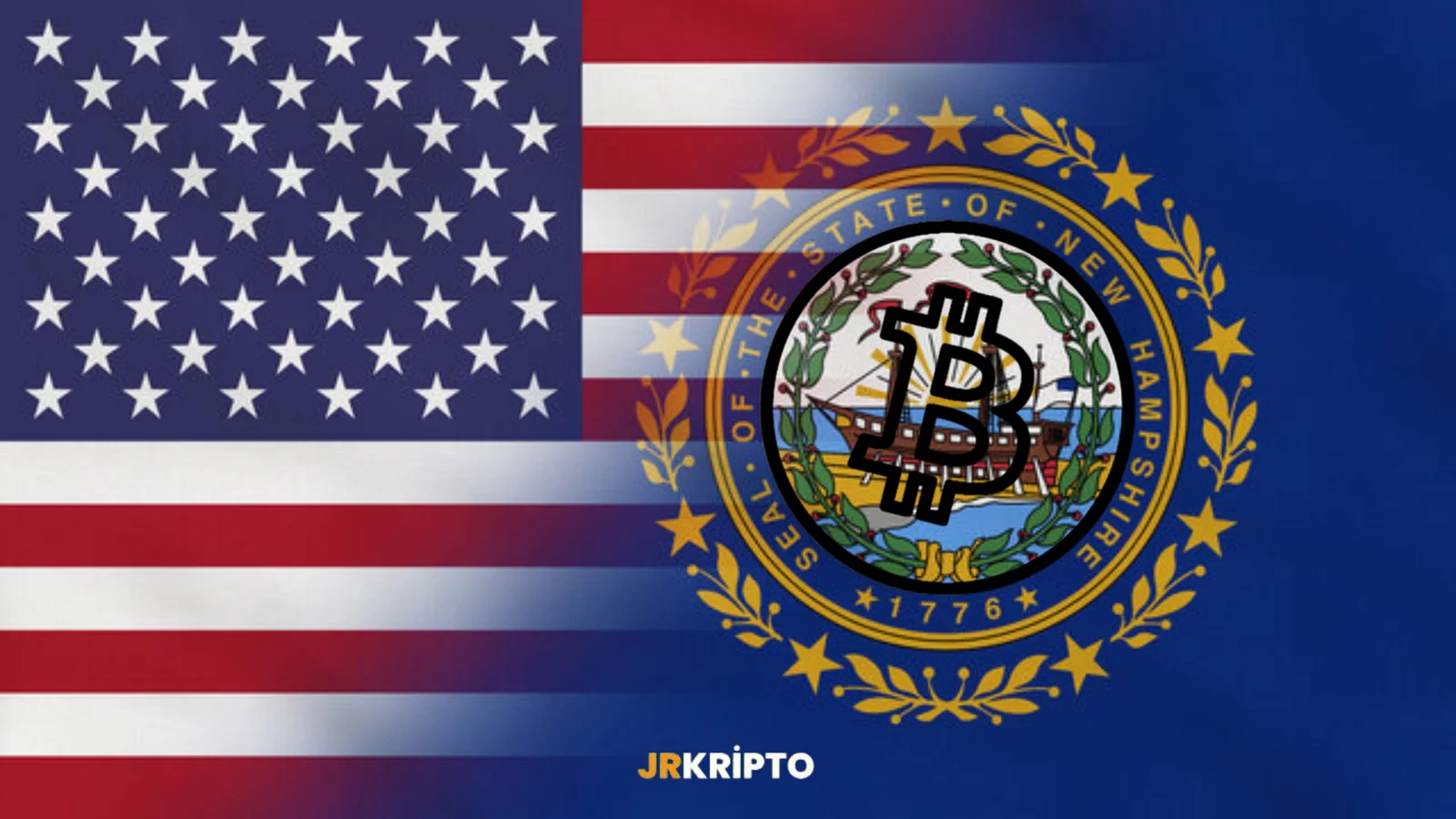
Daily Market Summary with JrKripto 11 April 2025
You can find our article “Daily Market with JrKripto” below, where we have compiled the most important developments in global and local markets. Let's analyze the general market conditions together and take a look at the latest assessments.Bitcoin (BTC) is currently trading at $82,100. The price has recovered from the $75,930 support with the strength it received and has approached the $82,819 level. If this resistance level is exceeded, it can be expected that the rise in BTC will continue to the levels of $ 85,419 and $ 92,214. However, if the price retreats with sales from the $82,819 level, the $75,930 support can be retested. If it falls below this level, the support levels of $ 73,804, $ 69,615 and $ 67,496 may be raised, respectively.Ethereum (ETH) is trading at $1,560. ETH, which has received an upward reaction from the $1,486 support, may move towards the $1,585 resistance in the short term. When this level is exceeded, it is possible for the price to rise towards the $1,900 and $ 2,000 levels. A close above $2,000 could allow ETH to reach its targets of $2,277 and $2,428. On the other hand, if the level of $1,486 goes below again, retreats to the levels of $ 1,370 and $1,217 may be on the agenda.Crypto NewsChina is increasing the customs duty on US goods to 125%.The New Hampshire State Assembly has passed the Bitcoin Reserve Act.Ross Ulbricht Will Make His First Public Appearance at the Bitcoin Conference in Las Vegas.President Trump has said that the first tariff deal is very close."Inflation is down, jobs are up, and America's Golden Age continues," the White House said.VanEck has applied for the AVAX ETF.The EU is considering suspending measures against the US tariffs, which are scheduled to take effect on April 15, for 90 days.CryptocurrenciesThose Who Have Risen The Most:XCN →increased by 81.7% to $ 0.0222.ORCA →jumped 46.6% to $2.83.XYO →increased by 34.6% to $ 0.0112.POPCAT →increased by 28.8% to $0.2099.CRV →increased by 20.9% to $ 0.6161.The Ones Who Fell The Most:PLUME → fell 6.8% to $0.1591.UXLINK → fell by 6.6% to $0.5747.DEXE → fell 6.0% to $14.86.PRIME → fell 5.8% to $3.07.NEO → fell 5.6% to $5.26.Other Data:Fear Index:Bitcoin: 25Ethereum: 22Dominans:Bitcoin: 63.28% ▲ 0.03%Ethereum: 7.38% ▲ 0.33%Total Net ETF Inflows Per Day BTC ETFs: -149.50 Million$ ETH ETFs: -38.80 Million$ Data to Follow TodayProducer Price Index (PPI) (Monthly) (Mar): Expectation: 0.2% / Previous: 0.0% / 15:30Global MarketsThe ongoing trade wars between the United States and China and the selling pressure in the long-term bond market have been Decoupled by steep losses in US stock indexes. The S&P 500 index lost 3.46%, the Dow Jones lost 2.50%, and the Nasdaq lost 4.31%. Of the 11 main sectors in the S&P 500, only one ended the day in a surplus: the consumer essentials sector rose 0.21%. Infrastructure shares, on the other hand, showed a resilient outlook with a limited decline of 0.63%. The weakest performances were seen in the energy sector with a loss of 6.40%, technology with a loss of 4.55% and telecommunications and discretionary consumption sectors with a loss of 4.15%.US President Donald Trump has announced that he has increased the customs duty imposed on China to 145%. This development has increased the unease in global markets. On the other hand, although the 30-year bond auction was successful, selling pressure continued in the bond market. While short-term bonds were watching buyers, the 10-year bond rate ended the day at 4.42% and the 30-year bond rate at 4.87%.The weakness in the Dollar Index continues; the index lost 1.94% to 100.91. In this decline, the fact that the inflation data for March announced in the United States fell below expectations was effective. Headline inflation was 2.4% year-on-year, lower than the expected 2.5%. On a monthly basis, while an increase of 0.1% was expected, there was a decrease of 0.1%. Core inflation also rose by 2.8%, below expectations of 3.0% annually, and by 0.1% on a monthly basis instead of 0.3%.The decline in the prices of some service items had an effect on the low inflation rate. In particular, air ticket prices fell by 5.3%, accommodation services by 4.3% and car insurance by 0.8%, dragging down core inflation. These developments have increased expectations of a weak outlook for the airline sector. In headline inflation, the decrease in energy prices by 2.39% was effective, while rent inflation followed the current trend with an increase of 0.33%.Today, the Producer Price Index (PPI) and the University of Michigan Consumer Confidence Survey will be followed in the United States. While a mixed course is observed in Asian markets, European indices are expected to start the day horizontally and slightly positive.The Most Valuable Companies and Their Stock PricesApple (AAPL) → market capitalization of $2.86T, price per share of $190.42, a decrease of 4.24%Microsoft (MSFT) → market capitalization of $2.83T, price per share $381.35, down 2.34%NVIDIA (NVDA) → market capitalization of $2.62T, price per share of $107.57, a decrease of 5.91%Amazon (AMZN) → market capitalization of $1.92T, price per share of $181.22, a decrease of 5.17%Alphabet (GOOG) → market capitalization of $1.88T, price per share of $155.37, down 3.53%Borsa IstanbulBorsa Istanbul cannot perform strongly enough despite the positive mood in global markets. The BIST 100 index ended the day with a rise of only 0.7%, failing to maintain its gains during the day after having a positive opening exceeding 3% in the first hours of the day yesterday. Although the money inflow and outflow seems balanced on a daily basis, when we look at the weekly data, it is seen that serious foreign investor outflows and CBRT reserve utilization continue on both the stocks and bonds sides. Although risk pricing in TL assets has gained some balance, the market's momentum is still weak. For this reason, we think that it is necessary to be cautious in short-term positions.Technically, the 9.000–9.100 band with the 9.270 level and the 9.000-9.100 band stand out as important support areas for the BIST 100 index, while the 9.500 resistance can be monitored in upward movements. In yesterday's trading, the index ended the day at 9,339, retreating after testing an intraday high of 9,581. The 9.473–9.594 band, which was tested intraday, remains important as a near resistance. In case of persistence above this level, optimism may increase in the index in the short term and a move towards the 9.738–9.895 resistance zone may be on the agenda. However, if the downward pressure continues, the 9.221 level will stand out as a close support, while the 9.044–8.870 band will play a critical role as the previous bottom zone. If it hangs below this support band, the 8.618 level may be raised again.On the macroeconomic data side, the industrial production index (SSE) for February declined by 1.6% month-on-month and 5.2% year-on-year, adjusted for seasonal and calendar effects. When adjusted for calendar effects, the annual contraction was calculated as 1.9%. On a quarterly basis, SUE recorded an increase of 0.9%. This decline in industrial production indicates a gradual slowdown in economic activity.On the construction side, there is a slowdown in the cost increase rate. In February, the construction cost index increased by 1.24% month-on-month and by 23.94% year-on-year. On a seasonally adjusted basis, the monthly increase was calculated as 1.8%.Today, retail trade and turnover indices will be followed by the CBRT Market Participants Survey in Turkey. An increase in inflation expectations may be observed in the survey results. While abroad, the US PPI data will be announced. It is estimated that there may be a similar trend in PPI after the CPI, which came in below expectations yesterday.Turkey's 5-year CDS premium starts the day at 362 basis points. This shows that there has not yet been a serious improvement in the perception of foreign investors. As a matter of fact, according to the data announced yesterday, foreign investors sold $ 445 million in stocks last week. Its total foreign output in the last three weeks has exceeded $ 1.5 billion.Monday Decrees balance of payments statistics to be announced and the CBRT Monetary Policy Board (CPPC) meeting to be held on Thursday are among the prominent agenda items in the market next week. The general expectation of the market is that the CBRT will leave the policy rate unchanged at the April meeting. In addition, analyst forecasts for banks' balance sheets for the first quarter of 2025 may also have an impact on pricing.The Shares That Increased The Most:SONME → increased by 10.00% to 136.40 TL.RUZYE → reached TL 11.23 with an increase of 9.99%.VERTU →increased by 9.98% to 37.02 TL.BAKAB → increased by 9.96% to 34.90 TL.EUHOL → increased by 9.95% to TL 14.36.The Most Declining Shares:HDFGS → fell by -8.47% to TL 1.73.BJKAS → fell by -6.71% to TL 3.20.KATMR → fell by -6.44% to TL 2.18.ENSRI → fell by -6.04% to TL 20.84.ERSU → Decreased by -5.37% to TL 15.85.The Companies with the Highest Market Capitalization in Borsa Istanbul:QNB Finansbank (QNBTR) → Market capitalization of TL 1 trillion, price per share is TL 299.00, a decrease of 0.25%.Aselsan Electronics Industry (ASELS) → Market value of TL 561.34 billion, price per share is TL 120.20, a decrease of 2.36%.Garanti Bank of Turkey (GARAN) → market value of TL 443.10 billion, price per share is TL 106.40, an increase of 0.85%.Turkish Airlines (THYAO) → market value of TL 422.28 billion, price per share is TL 308.50, an increase of 0.82%.Koç Holding (KCHOL) → Market value of TL 379.12 billion, price per share is TL 146.60, a decrease of 1.94%.Precious Metals and Foreign Exchange PricesGold: 3901 TL Silver: 38.52 TL Platinum: 1159 TL Dollar: 38.05 TL Euro: 42.92 TL Hope to meet you again tomorrow with the latest news!

Trump's Tax Blow to China: The Customs Rate Has Increased to 145%
April 10, 2025 The trade war between the United States and China has entered a brand new and more violent phase. Dec. 10, 2025. With the recent decree signed by President Donald Trump, the customs duty rate applied to products imported from China has been increased from 125% to 145%. While this increase shook global markets, it also rapidly escalated political tensions.The US Announced Its Decision, China Immediately RespondedWhite House officials confirmed to CNBC that the new tax rate has been implemented. President Trump, on the other hand, in his first announcement from the Truth Social account, harshly criticized China's attitude to the market and stated that the tariffs would be 125%. However, within one night, he revised his decision and increased the rate to 145%.China, on the other hand, did not leave this step unanswered. The Chinese Ministry of Commerce announced that they have introduced a new customs duty of 84% on products imported from the United States. In a statement made by the Chinese Foreign Ministry, in response to the US move, “We will go all the way if necessary,” the message was given. Trump's Decision Global Markets on Alert, Uncertainty EscalatesWhile Trump defends these steps he has taken, he draws attention to the trade deficit between the United States and China.Dec. Trump, who said that the US imports from China are $ 440 billion, but China buys only $ 145 billion of products from the US, considers this situation "unacceptable".However, this tension does not concern only the two countries. Some leaders, such as the Turkish President, say that more caution should be taken. Erdogan warned against the consequences of the tension, saying, "A big hurricane that will affect everyone, not to mention small and big, is at the door, the current global order is cracking."Trump Is Sending a Message to Other Countries As WellTrump's new trade policy is not just aimed at China. Announcing that he had started negotiations on new tariff reductions with more than 60 countries, Trump temporarily implemented a 10% mutual reduction with these countries. Trump says that with this step, many countries are lining up to make a deal with the United States.The Director of the US National Economic Council announced that more than 75 countries want to make new trade agreements with the Trump administration. Trump interprets this situation as proof that his tough economic policies are working and gives a message to everyone "Don't be weak, don't panic".Tensions Are Rising in Global TradeWhile Trump's harsh move against China further escalates the trade war, the temporary discount agreements he has made with other countries are aimed at increasing the bargaining power of the United States. However, China's harsh response shows that this tension will not be calmed down easily. Global markets are expected to feel the effects of this storm much more strongly in the coming days.
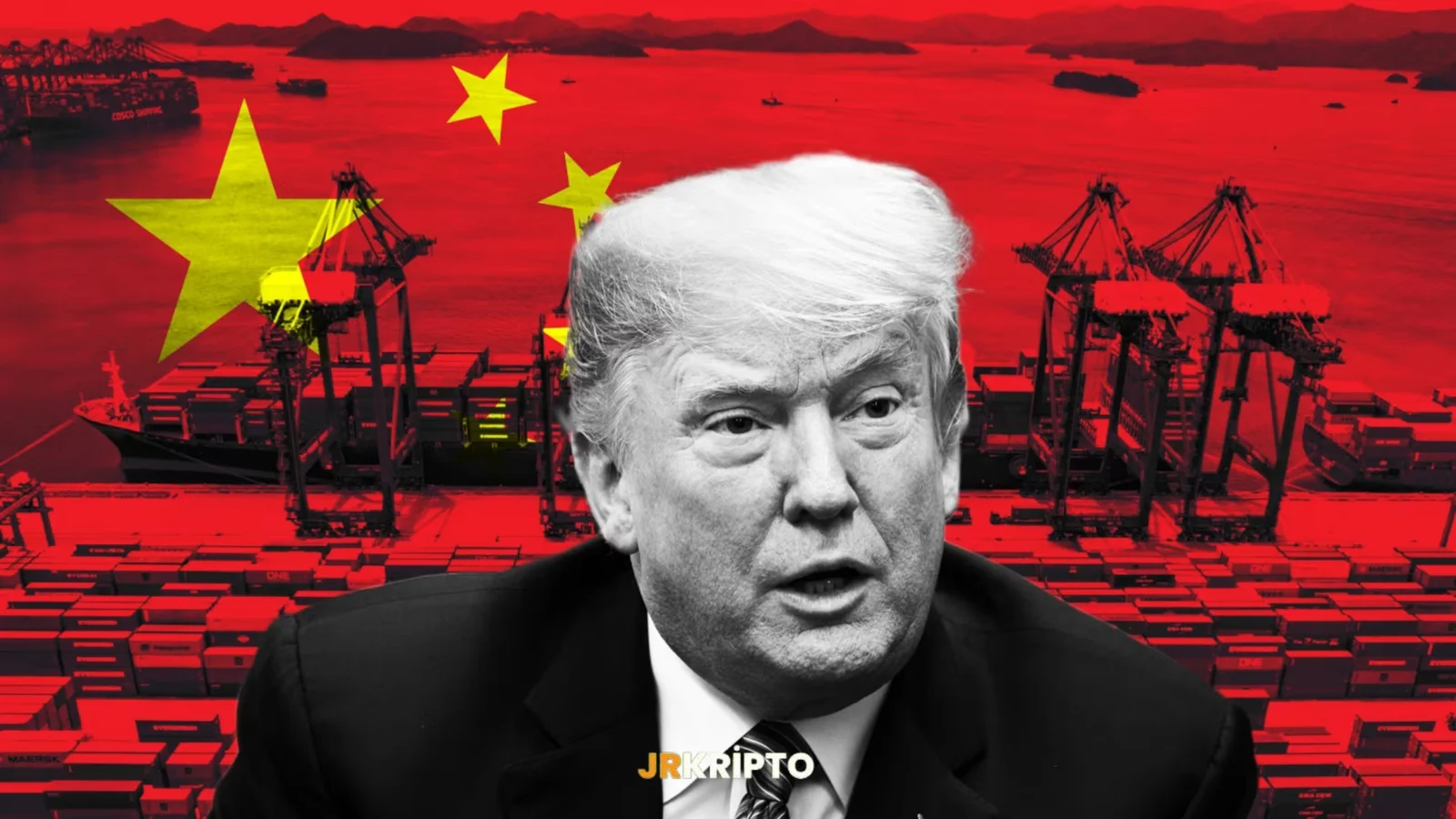
Inflation Has Declined, Trump Has Increased the Pressure: Markets Are Waiting for a Rate Cut
The US inflation data released on April 10, 2025 gave a strong message to the markets. The Consumer Price Index (CPI) came in below expectations (2.5%) with an annual rate of 2.4%. This data marks a significant decrease from the 2.8% level recorded in February.The Pressure on the Fed Is IncreasingAs soon as the data was announced, changes in market pricing were observed. Fed fund futures have started pricing in the possibility of a total of 120 basis points of interest rate cuts later this year. While retreating inflation strengthens the signals of monetary easing, the view that the Fed cannot postpone interest rates any longer is becoming widespread.Donald Trump is also closely following this process. In his statements today, he accused the Fed of “taking it slow” and gave a clear message:“This is an economic revolution. And we will win. The result will be historic.”Trump's pressure is not only verbal. While the uncertainty created by customs duties is thought to create an inflationary pressure in the short term, the fact that the announced rates remained below expectations reassured the markets. It is estimated that this situation contributes to the decline in inflation.The White House: "The Golden Age Continues”Following the inflation data, a statement from the White House stressed that ”inflation has fallen, jobs have increased, and America's Golden Age continues." This indicates that the government is preparing the ground for calls for an interest rate cut to make growth sustainable.White House Trade Adviser Peter Navarro's statement ”I expect the market to find a bottom" also strengthens expectations about the possible expansion process.What It Means For Crypto MarketsFalling inflation and upcoming interest rate cuts are creating a positive backdrop for cryptocurrencies. Monetary expansion and cheap liquidity can trigger rises in risky assets, especially Bitcoin.In addition, Trump's interest in digital assets and recent policies reducing regulatory pressures may increase investor confidence.Summarize:US annual inflation is below expectations at 2.4%.It is now highly likely that the Fed will cut rates in May.Trump is ramping up the pressure for a rate cut by openly criticizing the Fed.The White House welcomed the inflation data positively and emphasized the ”Golden Age".For the crypto markets, this environment has bullish potential.
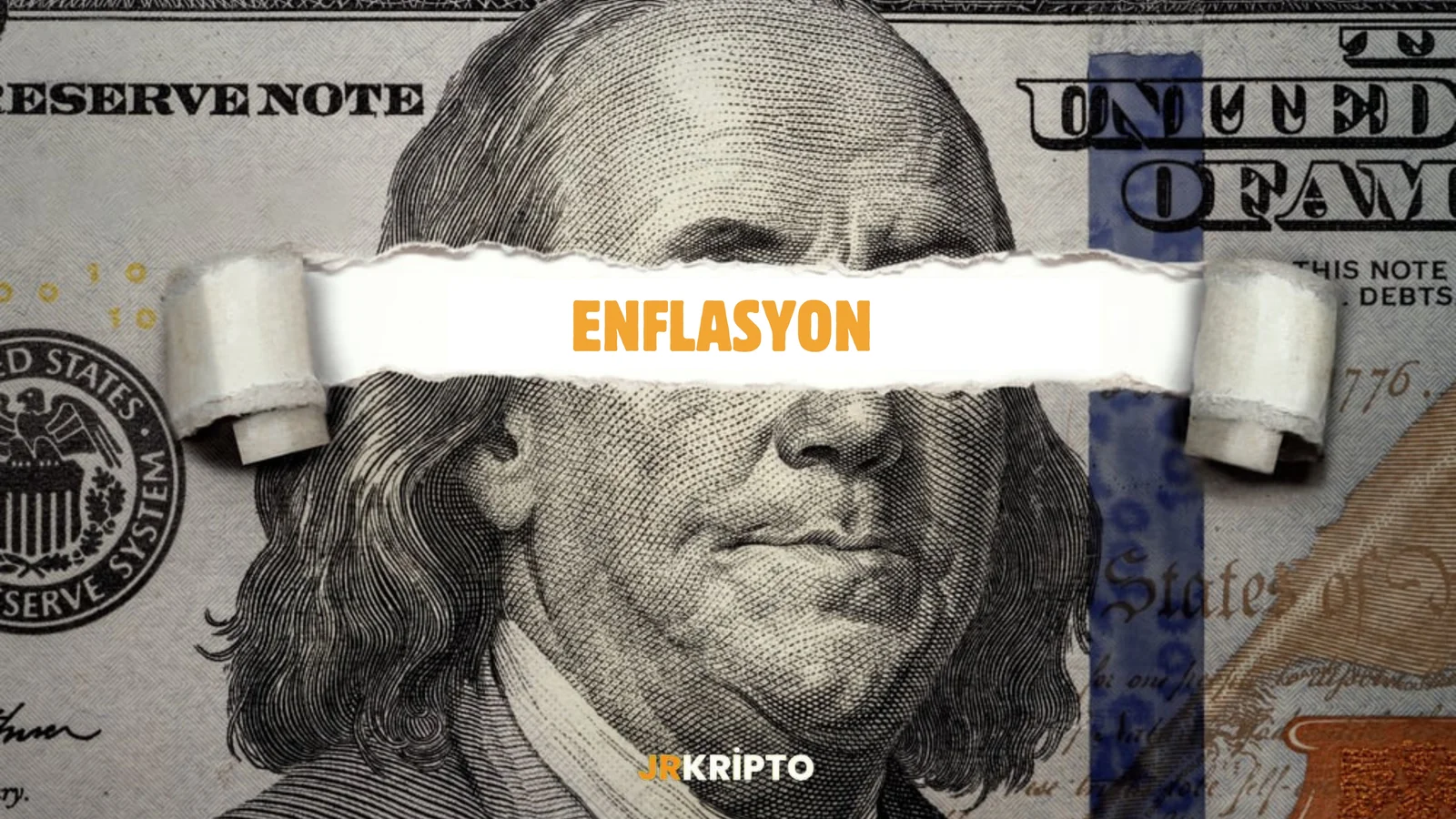
Canary Capital's SUI ETF Move: SEC Filing Filed
The crypto world is moving again. Canary Capital has filed its official application with the SEC through the Chicago-based options exchange CBOE to create a new SUI-based ETF. This step shows that the crypto world is moving closer towards the traditional financial market.SUI is a blockchain network that has recently come to the fore rapidly, attracting attention thanks to its scalability and high transaction capacity. It is known for being practical and convenient for Web3 users and developers. It has a wide range of uses from NFTs to DeFi applications.What Will the ETF Application Bring?If Canary's application is accepted, investors will be able to easily invest through the ETF without having to own SUI tokens directly. This creates a more practical and reliable investment option for individual and institutional investors.The application was filed on form 19b-4 for official approval by the SEC. If approved, the Canary SUI ETF will be traded on the CBOE BZX Exchange under the name "Canary SUI ETF". This development is important enough to pave the way for altcoin-based ETFs not only for SUI, but in general.Canary Capital's strategy is clear: to reach a wider audience by putting its SUI token in front of traditional investors. In addition, the fund also includes staking income, which will allow investors to benefit not only from price movements, but also from network rewards.A New Era May Begin For SUI and AltcoinsIf this ETF is approved, the SUI project will be much more visible, the investor base will expand, and the door to a new era for altcoin ETFs will be opened. Canary Capital's move could further solidify the Decoupling between crypto and traditional finance.
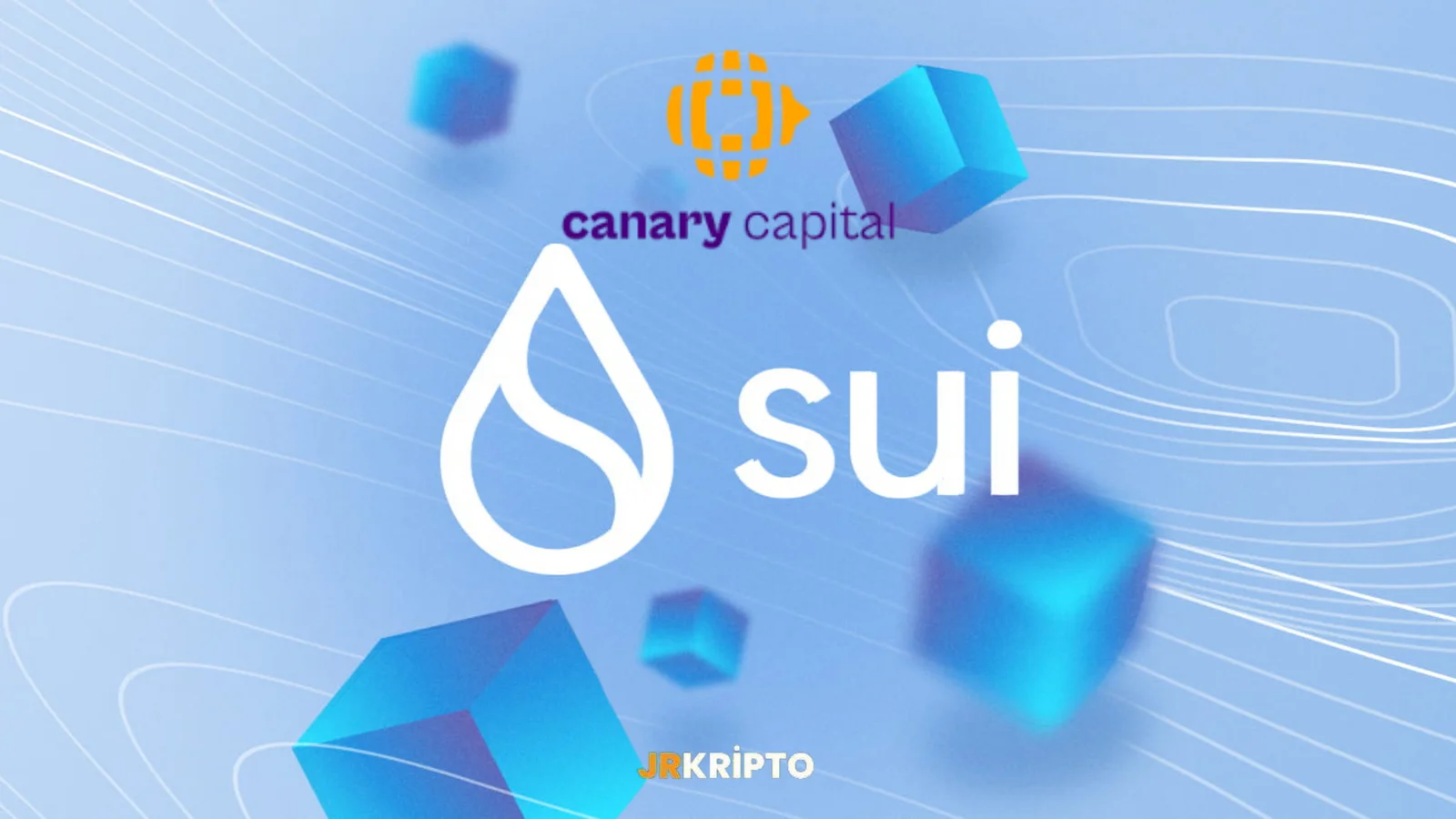
Daily Market Summary with JrKripto 10 April 2025
You can find our article “Daily Market with JrKripto” below, where we have compiled the most important developments in global and local markets. Let's analyze the general market conditions together and take a look at the latest assessments.Bitcoin (BTC) is currently trading at $81,800. The first resistance level in BTC, which gained an upward momentum with the reaction from the $75,930 support, has been approached to $82,819. If this level is exceeded, it may be possible for the price to rise to the levels of $ 85,419 and then $ 92,214. However, if there is a rejection below $82,819, a retreat towards the $75,930 support may be seen again. If this level is lost, the levels of $ 73,804 – $69,615 – $ 67,496 will be followed as the next supports.Ethereum (ETH) is trading at the level of $1,600. The fact that the price has risen above the $ 1,486 level again indicates that the selling pressure has decreased. If the resistance of $1,585 is exceeded during the continuation of the upward movement, the price can be expected to recover to the levels of $ 1,900 and $ 2,000. Daily closures above $2,000 could mark the beginning of a new uptrend for ETH towards the $2,277 and $2,428 levels. In the downside scenario, $1,486 will be followed as support again; if this level is broken, the levels of $1,370 and $1,217 may be raised.Crypto News21Shares has submitted the S-1 file for the Dogecoin ETF.President Trump has offered to meet and meet with Chinese President Xi Jinping Dec.Tether mints $1 billion USDTThe SEC has approved options for spot ETHEREUM ETFs.Pakistan plans to allocate some of its surplus electricity to #Bitcoin mining.VanEck said that China and Russia have conducted some commercial transactions using Bitcoin.Mastercard has partnered with Kraken to allow users in Europe to spend #Bitcoin at more than 150 million merchants worldwide.CryptocurrenciesThose Who Have Risen The Most:XCN →increased by 44.7% to $ 0.0122.FARTCOIN →increased by 39.5% to $0.7264.UXLINK →increased by 30.5% to $ 0.6213.FLR →increased by 26.1% to $ 0.0142.KET →increased by 25.6% to $0.1679.The Ones Who Fell The Most:SAROS → fell 19.5% to $0.1263.ZEC →fell 6.7% to $32.66.XTZ → fell 2.7% to $0.5653.KAITO → fell by 2.4% to $0.8199.EOS → fell 1.5% to $0.6568.Other Data:Fear Index:Bitcoin: 28Ethereum: 22Dominans:Bitcoin: 63.47% ▲ 0.37%Ethereum: 7.60% ▼ 2.28%Total Net ETF Inflows Per Day BTC ETFs: -127.20 Million$ ETH ETFs: -11.20 Million$ Data to Follow TodayCore Consumer Price Index (CPI) (Monthly) (Mar):Expectation: 0.3% / Previous:0.2%Consumer Price Index (CPI) (Annual) (Mar):Expectation: 2.5% / Previous: 2.8%Consumer Price Index (CPI) (Monthly) (Mar):Expectation: 0.1% / Previous:0.2%Applications for Unemployment Benefits:Expected: 223K | Previous: 219KGlobal MarketsGlobal markets started the day negatively when China increased the customs tariff on imported products from the United States from 34% to 84%. However, US President Donald Trump's “buying time” announcement via social media, followed by the announcement of the suspension of customs tariffs on countries other than China for 90 days, led to a sharp recovery in the markets. Following these developments, US stock markets experienced one of the strongest days in their history.The S&P 500 index ended the day with a premium of 9.51%, the Nasdaq by 12.16% and the Dow Jones by 7.87%. Strong purchases were followed in all sectors, especially technology shares. The tech giants of the so-called ”magnificent seven" gained an average value of 14.62%. The highest performances on a sectoral basis came from the technology (14.15%), discretionary consumption (11.36%) and telecommunications (10.00%) sectors. Cyclical commodities also had a positive trend; copper and oil in particular made strong premiums.According to Trump's statement, the mutual customs tariffs imposed against more than 75 countries that are open to negotiation with the United States and do not retaliate, except China, have been suspended for 90 days, and only a 10% tax will be applied to these countries. On the other hand, the tariff rate applied to China has been increased to 125%.The minutes of the Fed's March 18-19 meeting, published yesterday in the US, highlighted the high uncertainty in the economic outlook. The Fed had left interest rates steady in the December range of 4.25% - 4.50%. In the minutes, it was stated that the downside risks for employment and growth have increased, while the upward pressures on inflation have strengthened. In particular, it was stated that high customs tariffs could increase inflation, but it is unclear to what extent and for how long this will be effective.The Consumer Price Index (CPI) data for March, which will be announced today in the United States, is of critical importance for the markets. The expectations are that the headline CPI will increase by 0.1% per month and 2.5% per year, while the core CPI will increase by 0.3% per month and 3.0% per year. In addition, weekly applications for unemployment benefits will also be monitored. The CPI increased by 0.2% in the previous month, while annual inflation decreased from 3.0% to 2.8%.Asian stock markets are looking positive today. In Europe, on the other hand, Trump's statements are being priced in this morning after yesterday's declines, and futures indices are seeing rises approaching 8%. On the other hand, US futures indices are Decelerating between 0.5% -1.2% with some profit-taking this morning after yesterday's rise.The Most Valuable Companies and Their Stock PricesApple (AAPL) → market capitalization of $2.99T, price per share of $198.85, an increase of 15.33%Microsoft (MSFT) → market capitalization of $2.9T, price per share is $390.49, an increase of 10.13%NVIDIA (NVDA) → market capitalization of $2.79T, price per share of $114.33, an increase of 18.72%Amazon (AMZN) → market capitalization of $2.03T, price per share of $191.10, an increase of 11.98%Alphabet (GOOG) → market capitalization of $1.95T, price per share of $161.06, an increase of 9.88%Borsa IstanbulWhile there was a 2.1% decline in Borsa Istanbul yesterday, it is expected that the losses in the BIST 100 index will be compensated and the 9500 level will be tested with the positive outlook in global markets this morning. 9500 points is a critical level at which the descending channel resistance, which has been monitored since March 19, has passed, and it is possible for the upward movement to gain strength if this level is exceeded and permanence is ensured above it. While the 9473-9594 band is monitored as the first resistance zone above, the 9738-9895 December may come up if this band is exceeded. In the broader term, the 9953 point level is being followed as a major resistance.In the downward movements, 9221 points are in the first support position. Stronger supports are located in the 9044-8870 band. In case of possible sagging below this zone, the 8618 level can be re-tested.Domestically, industrial production and construction cost index data for February will be announced today. In January, industrial production fell by 2.3% on a monthly basis, adjusted for seasonal and calendar effects, and increased by 1.2% year-on-year, adjusted for calendar effects. These data will be closely monitored in terms of the course of economic activity. The Turkish 5-year CDS premium starts the day at 373 basis points.In general, Borsa Istanbul is expected to make a positive start today, while the technical levels and the data to be announced will be decisive on the intraday direction.The Shares That Increased The Most:INTEM → increased by 10.00% to TL 215.60.VERTU → increased by 10.00% to 33.66 TL.DMRGD → reached TL 16.74 with an increase of 9.99%.DOBUR → increased by 9.99% to 238.90 TL.BAGFS → became TL 26.24 with an increase of 9.97%.The Most Declining Shares:EUHOL → fell by -9.99% to TL 13.06.SEGMN → decreased by -9.09% to TL 23.00.CHIP → fell by -7.11% to 70.55 TL.TSPOR → fell by -5.56% to TL 1.02.SKTAS → -5.30% decrease was 5.00 TL.The Companies with the Highest Market Capitalization in Borsa Istanbul:QNB Finansbank (QNBTR) → Market capitalization of TL 1 trillion, price per share is TL 305.00, an increase of 1.84%.Aselsan Electronics Industry (ASELS) → Market value of TL 533.98 billion, price per share is TL 122.30, an increase of 4.44%.Garanti Bank of Turkey (GARAN) → Market capitalization of TL 444.36 billion, price per share is TL 107.30, an increase of 1.42%.Turkish Airlines (THYAO) → market value of TL 422.28 billion, price per share is TL 312.00, an increase of 1.96%.Koç Holding (KCHOL) → Market value of TL 391.29 billion, price per share is TL 152.60, a decrease of 1.10%.Precious Metals and Foreign Exchange PricesGold: 3814 TL Silver: 37.61 TL Platinum: 1146 TL Dollar: 37.97 TL Euro: 41.84 TL Hope to meet you again tomorrow with the latest news!

Daily Market Summary with JrKripto 9 April 2025
You can find our article “Daily Market with JrKripto” below, where we have compiled the most important developments in global and local markets. Let's analyze the general market conditions together and take a look at the latest assessments.Bitcoin (BTC) is currently trading at $76,600. Maintaining this level in BTC, which is hovering near the $ 75,930 support, may allow the upward reactions to continue in the short term. If persistence is achieved above $ 75,930, the $82,819 level can be followed as the first strong resistance. With the overcoming of this resistance, gradual increases can be seen towards the $85,419 and $ 92,214 levels. On the other hand, if the $75,930 level is lost, the $73,804 support may come into play. In deeper declines, the levels of $69.615 and $67.496 may be raised.Ethereum (ETH) is trading at the $1,460 level and has sagged below the $1,486 support. If persistence is achieved below this level, the decline is likely to deepen to the level of $ 1,370. Further below, the $1,217 level can be viewed as the main support. The first resistance in the upward reactions will be $1,486. If this level is reached again, a recovery towards the December of $ 1,585 – $ 1,900 may be possible. A close above $2,000 could bring ETH targets of $2,277 and $2,428.Crypto NewsMastercard has partnered with Kraken to allow users in Europe to spend #Bitcoin at more than 150 million merchants worldwide.In the US, short-term interest rate futures traders are increasing their forecasts that the Fed will cut its policy rate in May.Canary has filed a SUI ETF application with the CBOE.Travis Hill, the Acting Head of the FDIC, said that they will issue additional guidelines on certain activities related to October #Bitcoin and crypto.The Justice Department dissolved the crypto unit in conjunction with Trump's withdrawal of digital asset regulations.Jeff Kendrick, head of research at Standard Chartered, said: "Bitcoin will be a protection against customs tariff risks this time.”CryptocurrenciesThose Who Have Risen The Most:GAS →jumped 35.1% to $2.65.NEO →jumped 9.1% to $5.45.LAYER →rose 5.5% to $1.49.DCR → rose 5.5% to $11.95.VENOM →rose 4.7% to $0.1269.The Ones Who Fell The Most:GRASS → fell 13.8% to $1.62.IBERA → fell 13.3% to $3.35.BERA → fell 11.7% to $3.42.FARTCOIN → fell by 11.4% to $0.5197.NEAR → fell 10.5% to $1.88.Other Data:Fear Index:Bitcoin: 21Ethereum: 15Dominans:Bitcoin: 63.46% ▲ 0.19%Ethereum: 7.34% ▼ 1.36%Total Net ETF Inflows Per Day BTC ETFs: -326.30 Million$ ETH ETFs: -3.30 Million$ Data to Follow Today17:30 → Energy Information Administration Crude Oil InventoriesExpectation: 2,200MPrevious: 6,165M21:00 → Federal Open Market Committee (FOMC) Meeting MinutesGlobal MarketsUS stock markets made a positive start to the day with strong reaction purchases, but turned down with the harsh news flow experienced during the day. In particular, former President Donald Trump's announcement that he had increased the customs duties imposed on China to 104% caused serious pressure on the markets. Trump cited the reason for this decision as China's failure to withdraw its retaliatory tax policies.This development led to one of the most volatile days in recent years in the US stock markets. The indices moved in a wide band from up to 4% rises to losses of up to 3% during the day. At the end of the day, the S&P 500 lost 1.57%, the Dow Jones lost 0.84%, and the Nasdaq lost 2.15%.All sectors in the S&P 500 index ended the day on the minus. The raw materials sector showed the weakest performance with 2.96%, followed by discretionary consumption with 2.54%, energy and real estate sectors with 2.45%. More defensive sectors such as finance, infrastructure and healthcare closed the day with more limited losses.Selling pressure also dominated in US government bonds. Rising interest rates and inflation concerns also had an impact on the bond market. On the other hand, the message of the US economic administration that “we will ignore the markets for a while during this period” indicates that there is no Deceleration expected in the markets and that high volatility may continue.These developments have also been effective in global markets. Although European stock markets closed positively yesterday, European futures are down by about 4% this morning. Asian stock markets are also watching sellers. The downward trend in US futures indices continues this morning as well.One of the important topics of today will be the announcement of the minutes of the US Central Bank (Fed) meeting. December March meeting, interest rates were left fixed in the range of 4.25% -4.50%, while the interest rate forecast for 2025 was maintained at 3.9%. However, after the recent developments and increasing trade tensions, expectations that the Fed may cut rates sooner have started to strengthen in the market.The Most Valuable Companies and Their Stock PricesMicrosoft (MSFT) → market capitalization of $2.64T, price per share of $354.56, down 0.92%Apple (AAPL) → market capitalization of $2.59T, price per share of $172.42, a decrease of 4.98%NVIDIA (NVDA) → market capitalization of $2.35T, price per share of $96.30, a decrease of 1.37%Amazon (AMZN) → market capitalization of $1.81T, price per share of $170.66, down 2.62%Alphabet (GOOG) → market capitalization of $1.77T, price per share of $146.58, down 1.78%Borsa IstanbulThere was a balanced course and a positive close in Borsa Istanbul yesterday. Foreign transactions and money inflows and outflows were balanced. However, selling pressure is expected to increase in the BIST this morning due to the weak outlook in global markets. For this reason, we are going through a period when the volatility in the market is high, it is necessary to be careful in short-term transactions, and it would be healthier to focus on long-term investments.The agenda of the day is calm. While there are no important data available in Turkey and Europe, the minutes of the Fed's meeting in the United States will be followed. Turkey's 5-year credit risk premium (CDS) started the day at 363 basis points.Domestically, the Treasury had a cash deficit of TL 298.4 billion in March and a primary deficit of TL 162.9 billion. Compared to the same period last year, deficits increased. In March, revenues increased by 51.8% and expenses by 58.3%. Thus, the Treasury posted a total deficit of TL 901 billion in the first quarter of the year.The Turkish Export Climate Index published by the Istanbul Chamber of Industry stood at 51.5 in March. This indicates a moderate improvement in the Sundays to which Turkey exports. While there has been an increase in production, especially in Germany, it is stated that the Middle East continues to be an important source of growth for Turkey.The Treasury borrowed a total of TL 102.8 billion through bond auctions held yesterday. the interest rate of the 4-year fixed coupon bond was 39.81%. In addition, 22.1 billion TL 2-year lease certificates were sold. Thus, the total borrowing amount this week reached TL 187.4 billion.Although the BIST 100 index fell to 9400 level yesterday, it closed at 9477 points with reaction purchases. Technically, the 9044 level stands out as short-term support. The December 9473-9594 is monitored as a resistance zone in upward movements. If these levels are exceeded, an increase towards the 9738-9895 December may be possible. However, if it falls below the 9044 level, the 8870 and then the 8618 levels may come up again.The Shares That Increased The Most:AKYHO → increased by 10.00% to 3.52 TL.SNPAM → increased by 10.00% to 68.20 TL.FINDINGS → reached TL 29.28 with an increase of 9.99%.DERHL → increased by 9.99% to 74.30 TL.CHIP → became TL 75.95 with an increase of 9.99%.The Most Declining Shares:EUHOL → fell by -9.99% to TL 14.51.BRKO → fell by -9.87% to TL 12.15.AKMGY → fell by -9.70% to TL 224.40.SNKRN → fell by -9.03% to TL 134.00.ATSYH → decreased by -8.42% to TL 47.44.The Companies with the Highest Market Capitalization in Borsa Istanbul:QNB Finansbank (QNBTR) → Market capitalization of TL 1.05 trillion, price per share is TL 301.50, a decrease of 3.75%.Aselsan Electronics Industry (ASELS) → Market value of TL 541.73 billion, price per share is TL 117.20, a decrease of 1.35%.Garanti Bank of Turkey (GARAN) → market value of TL 463.68 billion, price per share is TL 106.60, a decrease of 3.44%.Turkish Airlines (THYAO) → market value of TL 425.38 billion, price per share is TL 307.00, a decrease of 0.41%.Koç Holding (KCHOL) → Market value of TL 405.74 billion, price per share is TL 155.90, a decrease of 2.56%.Precious Metals and Foreign Exchange PricesGold: 3682 TL Silver: 37.29 TL Platinum: 1135 TL Dollar: 38.01 TL Euro: 42.06 TL Hope to meet you again tomorrow with the latest news!

ETH: Comments and Price Analysis 09.04.2025
Ethereum (ETH): Key Levels to Watch in the Short and Mid-TermEthereum has recently held a significant position in the broader market, with its price action approaching key levels that are capturing the attention of investors. In this analysis, we’ll take a close look at the main support and resistance zones that could shape ETH’s upside potential in both the short and mid-term. ETH Support and Resistance Levels $1,410: Fundamental Support & Buyer StrengthThe $1,410 level marks a crucial support area where buyers have previously shown strength. If Ethereum maintains price action above this zone, there’s a strong likelihood of a move toward the resistance area between $1,615 and $1,643. Closing above this range would signal bullish momentum and strengthen the case for a potential rally. This level could serve as a roadmap for short-term price direction. However, if ETH falls below $1,410, it may trigger renewed selling pressure across the market.$1,836 – $1,805: SR Flip & POI Zone – The Decision-Making AreaThis region holds technical significance as it represents both an SR flip (support-turned-resistance) and a Point of Interest (POI). Daily closes within this range could set Ethereum on a course toward the next target at $2,058. Buying activity here would support bullish momentum and help reinforce market confidence.$2,533 – $2,722: High Timeframe Resistance & Trend FormationThese levels represent major resistance zones on higher timeframes. Historically, ETH has struggled to break through these levels, with declining volume and increased profit-taking often observed in this range. A decisive breakout above this resistance could spark a new mid-term uptrend. On the other hand, if ETH fails to breach these levels, sideways movement may continue, driven by persistent selling pressure. This area is a critical test zone that could determine Ethereum’s future direction.$3,400 and $5,000: Key Targets for Institutional Investors & the Layer 2 EffectLonger-term targets like $3,400 and $5,000 are closely watched by institutional players. Sustained price action above $3,400 could open the door for ETH to enter price discovery mode, with $5,000 becoming a realistic target. A breakout at these levels wouldn’t just benefit Ethereum—it could also spark significant inflows into Layer 2 projects. Standout names like OP, ZKSYNC, ARB, and STRK may experience notable capital rotation as ETH gains traction.Final ThoughtsEthereum is currently trading at critical levels. Breakouts and closes around these zones will play a key role in determining ETH’s short- to mid-term trajectory. How buyers and sellers react in these areas will serve as an important signal for where Ethereum may be headed next.Disclaimer: This analysis does not provide investment advice. It focuses on support and resistance levels that may offer potential trading opportunities based on current market conditions. All trading decisions and risk management are the sole responsibility of the individual. The use of stop-loss strategies is strongly recommended.
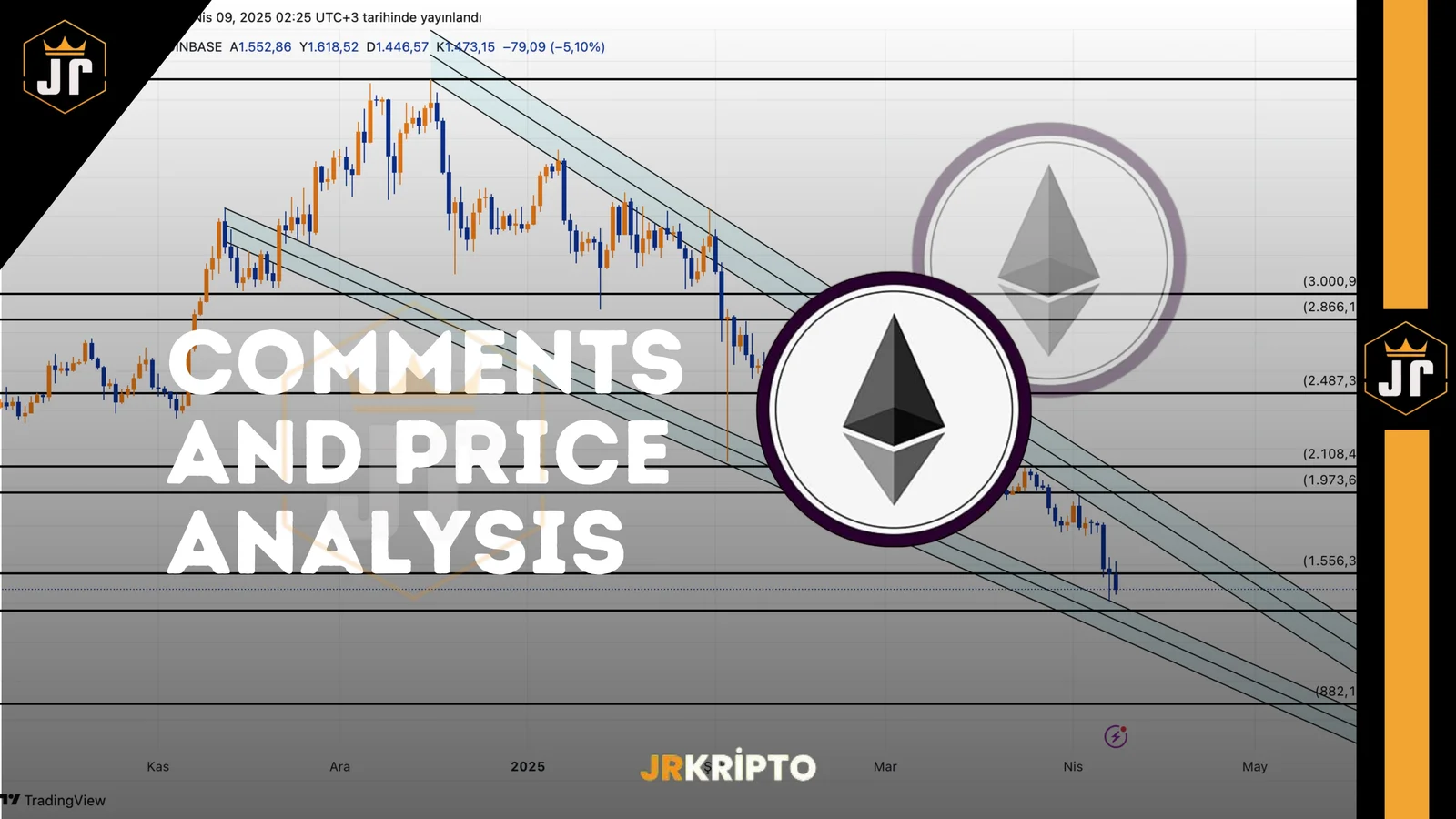
BTC and USDT.D: Comments and Price Analysis 09.04.2025
Bitcoin (BTC) and the Latest Crypto Market Outlook: Key Levels and Trend-Defining IndicatorsAs the cryptocurrency market continues to revolve around Bitcoin’s price action, all eyes are on the critical levels highlighted by technical analysis. As of April 2025, global economic volatility, signals from the U.S. Federal Reserve regarding monetary policy, and Bitcoin dominance are all pointing toward a potential major breakout.In this analysis, we’ll dive into Bitcoin’s key support and resistance zones, the structure of USDT dominance, and how macroeconomic developments could impact the market. BTC Macro Bottom Zone Key Technical Levels for Bitcoin$73,336 – Historical Bottom Zone (Macro Support)Bitcoin previously marked this level as a major bottom before rallying 2.5x. It remains a psychologically and technically important area. If the price revisits this zone, strong buying pressure could re-emerge as it did in the past.$79,618 – Daily Close LevelA confirmed daily close above this threshold could turn the short-term outlook bullish. This level signals buyers regaining control and may serve as a short-term trend indicator.$85,000 - $86,400 – POI (Point of Interest)This zone is where buyers and sellers have historically clashed. A strong breakout here, backed by high volume, could be decisive for momentum. It may also act as a key profit-taking level.$90,500 – Liquidity Cluster and ResistanceThis is a heavy resistance zone with accumulated stop-loss orders and pending trades from short-term players. A breakout here could trigger sharp movements due to liquidity release.$94,700 - $96,900 – NPOC and Critical ResistanceThis range, known as a "Naked Point of Control" (NPOC), represents a high-volume area where past price action failed to find equilibrium. If Bitcoin breaks through with volume, it could clear the path toward the $100,000 milestone. This area may also be a spot where investors re-enter positions.What Are the Macroeconomic Indicators Telling Us?Global economic shifts are directly impacting the crypto markets. One of the most notable recent events is former President Donald Trump’s public plea to the Federal Reserve:“Cut interest rates now!”Markets quickly responded. Futures contracts began pricing in a total of 120 basis points in rate cuts by year-end. Rate cuts imply more liquidity entering the system, which could create a major opportunity for limited-supply assets like Bitcoin.Overall Market OutlookTechnical indicators suggest Bitcoin is on the verge of a major breakout. The $73,336 level could serve as a strong accumulation zone for long strategies, while the upper resistance levels are the gateways to a potential bull market. A sustained move above $94,700 could bring a test of the $100,000 psychological barrier.Meanwhile, the prospect of Fed rate cuts combined with signs of global monetary expansion strengthens the technical case for a bullish scenario in the second half of 2025.USDT Dominance (USDT.D) Technical Analysis – Key Levels and Potential ScenariosUSDT Dominance (USDT.D) is one of the most important indicators for analyzing investor sentiment in crypto markets. Rising dominance suggests risk aversion, while declining dominance signals growing risk appetite. USDT.Decision Zone D Below is a breakdown of the key technical levels and potential scenarios:5.03% – Level That Could End Selling PressureThis has historically been a bottom zone where the market has rebounded and shifted toward risk assets. A weekly close below this level would suggest a move back into Bitcoin and altcoins. Dropping below this area could signal the start of an altcoin season.5.41% – 5.46% Range: Strong Seller ZoneThis resistance zone has repeatedly triggered sell-offs and flows back into USDT. While currently broken, it's essential to watch if it will act as support on a retest.6.20% – 6.89% Range: Macro Zone to End Selling PressureThis range marks one of the historically highest USDT dominance zones and often coincides with major market pullbacks. If dominance rises to this level again, market panic may increase, but this zone also frequently marks trend reversals. Approaching this area could present entry opportunities in altcoins.Disclaimer: This analysis does not provide investment advice. It highlights support and resistance levels that could present potential short- to medium-term opportunities depending on market conditions. All trading decisions and risk management remain the responsibility of the individual. Stop-loss strategies are strongly recommended for all trades.
